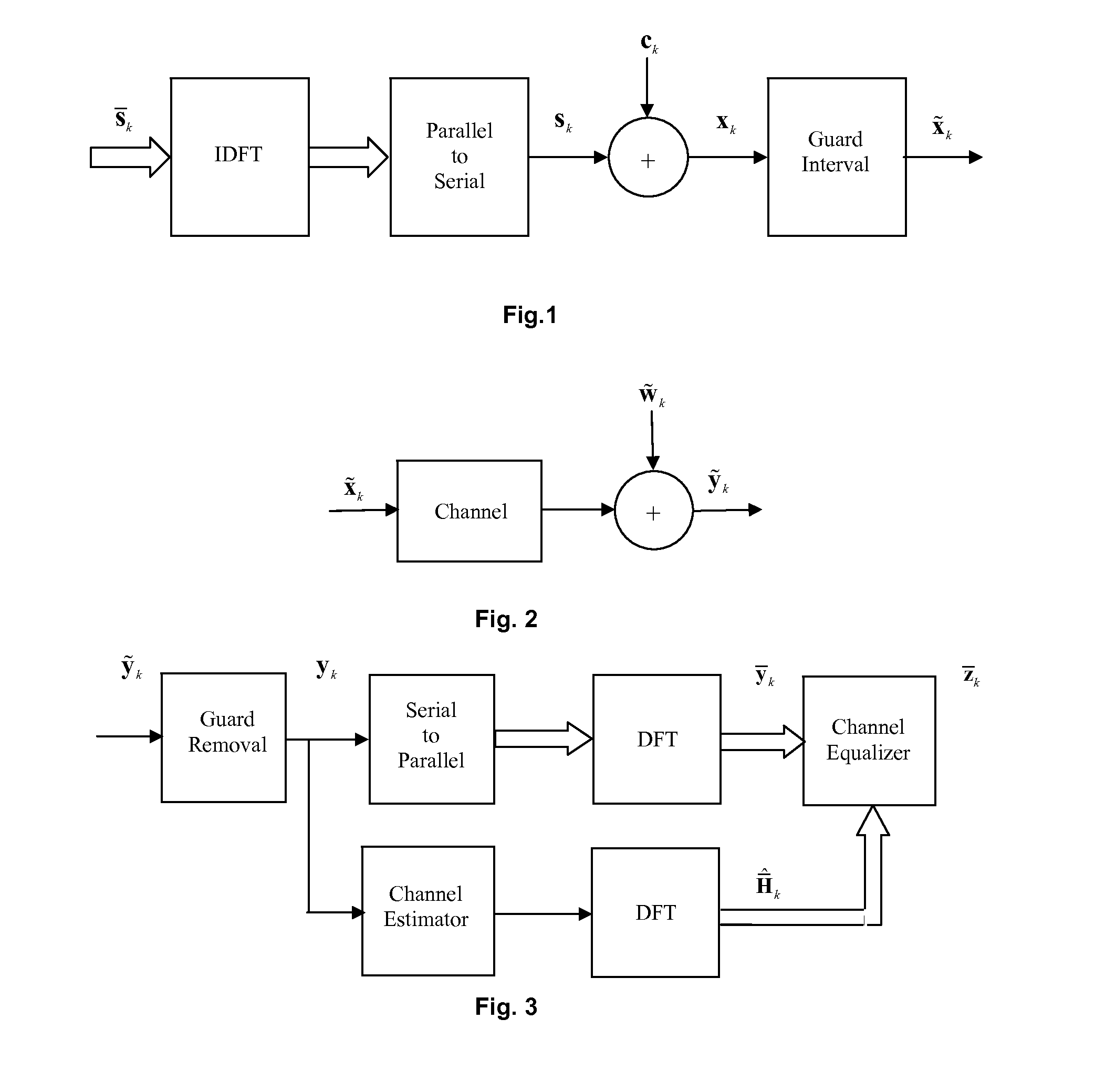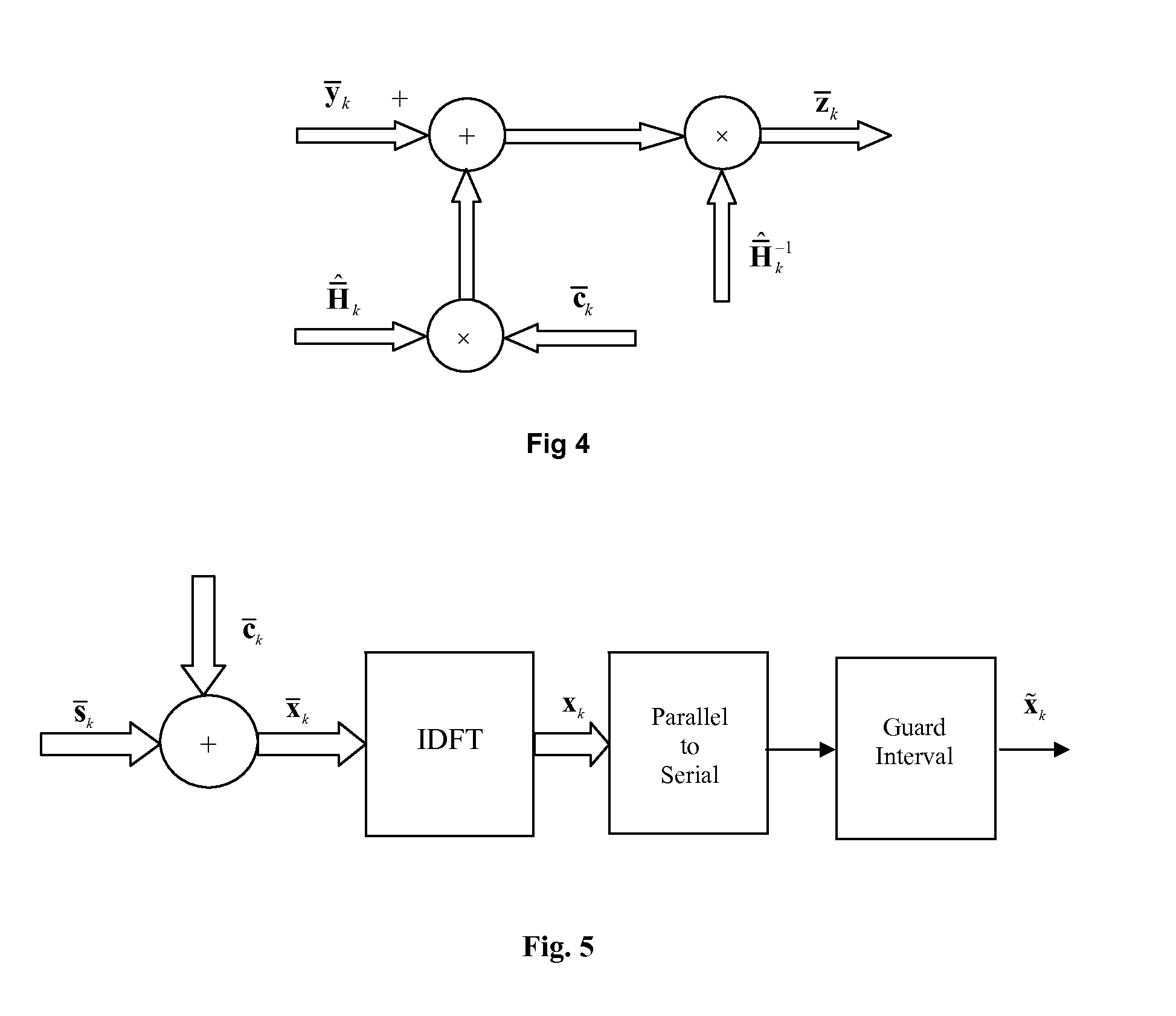Optimal training sequence and channel estimation method and system for superimposed training based OFDM systems
a channel estimation and superimposed training technology, applied in the field of channel estimation and equalization in multicarrier as well as single carrier communication systems, can solve the problems of channel estimation errors, reduce the bandwidth efficiency of the system, and only aggravate the problem of the need for higher data rates and mobility
- Summary
- Abstract
- Description
- Claims
- Application Information
AI Technical Summary
Benefits of technology
Problems solved by technology
Method used
Image
Examples
Embodiment Construction
[0035]FIG. 1 is the block diagram of the transmitter of a superimposed training based OFDM system. Although not necessary, perfect synchronization is assumed here for illustration. Binary data is grouped into symbols depending on the level of QAM modulation used. Vectors sk of such symbols are formed which are then passed to the IDFT block. Here k stands for the OFDM symbol index. Some of the entries are zeros to serve the spectral mask requirements of the OFDM system. The output of the IDFT block is sk=FHsk, where F is the normalized N×N DFT matrix with F(m,n)=1 / √{square root over (N)}e−j2πmn / N and FH is the complex conjugate transpose. Here (m,n) is used to denote the mth row and nth column of the matrix. A parallel to serial converter serially outputs the simultaneous IDFT outputs. A training sequence ck is then algebraically added to this IDFT output with a specific low pilot to data power ratio to get,
xk=sk+ck (1)
[0036]A characteristic of the invention is the training sequence...
PUM
 Login to View More
Login to View More Abstract
Description
Claims
Application Information
 Login to View More
Login to View More - R&D
- Intellectual Property
- Life Sciences
- Materials
- Tech Scout
- Unparalleled Data Quality
- Higher Quality Content
- 60% Fewer Hallucinations
Browse by: Latest US Patents, China's latest patents, Technical Efficacy Thesaurus, Application Domain, Technology Topic, Popular Technical Reports.
© 2025 PatSnap. All rights reserved.Legal|Privacy policy|Modern Slavery Act Transparency Statement|Sitemap|About US| Contact US: help@patsnap.com



